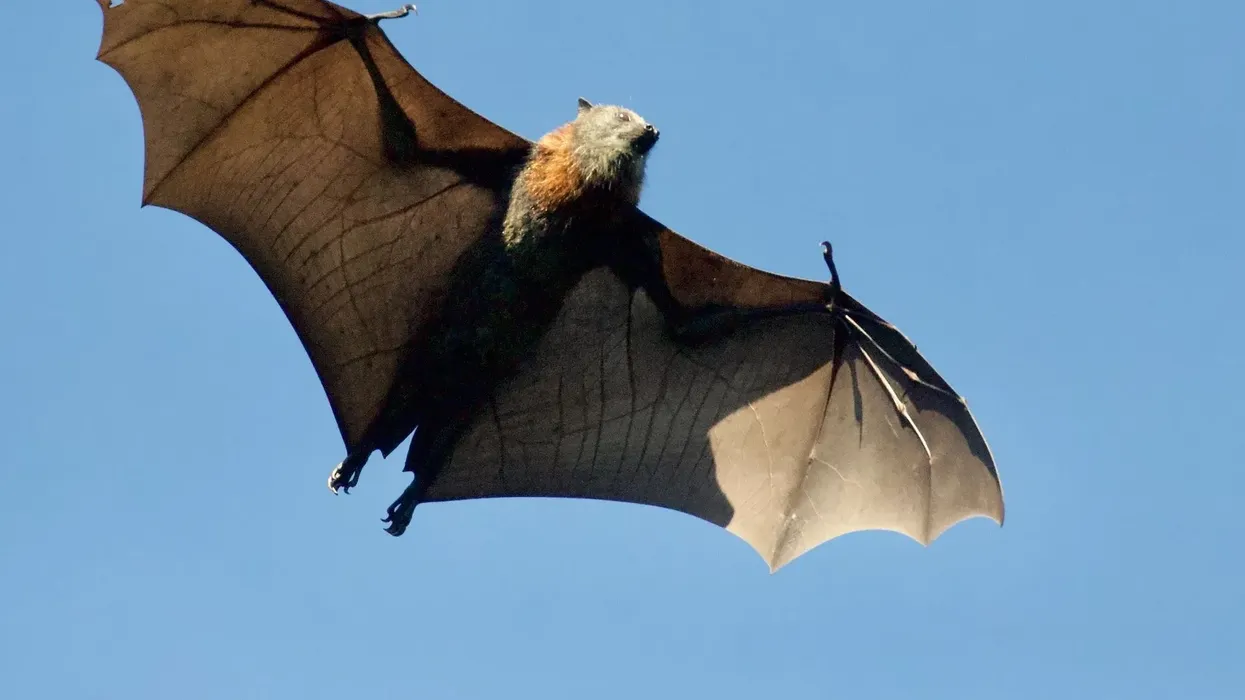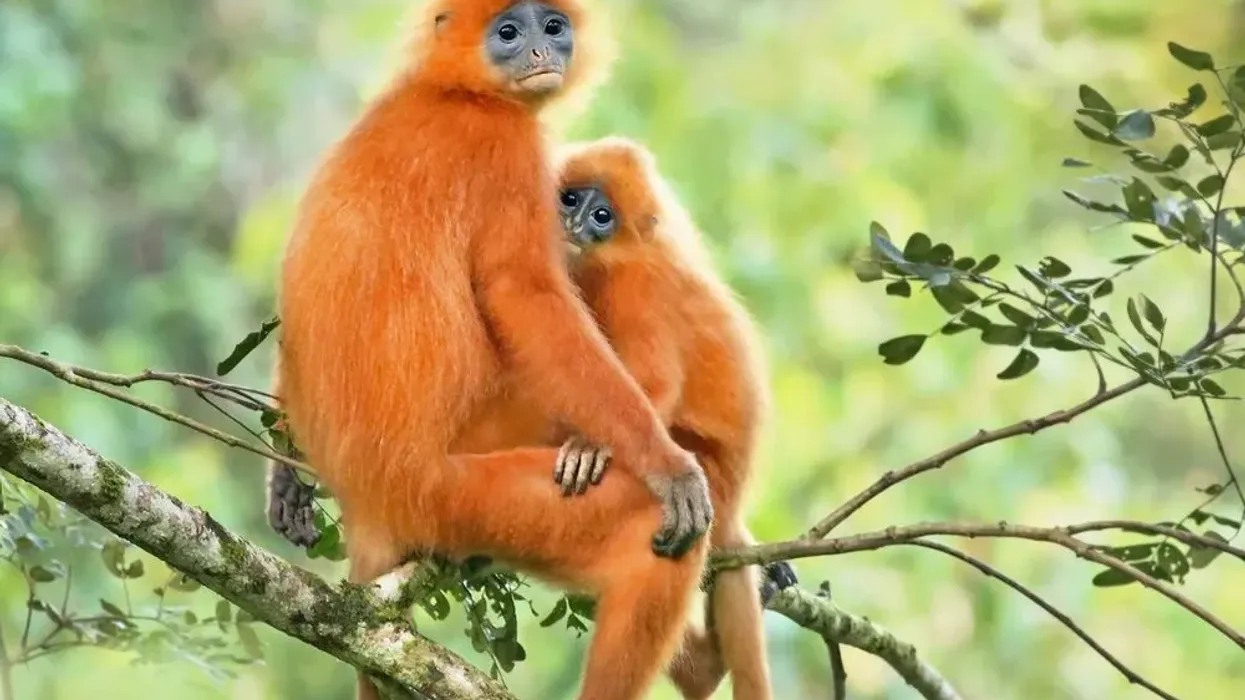Are you fascinated by gliding possums, like the feathertail glider? Then, here we have all there is know about the mahogany gliders.
The mahogany glider is an endangered species of gliding possum whose scientific name is Petaurus gracilis. This species is endemic to parts of Queensland, Australia.
Mainly they can be seen in a small coastal area situated southeast of Ingham and north of the Hull river. The mahogany glider habitat falls within the wet tropics biogeographic area in Australia.
These gliders have a gliding membrane between their forelimbs and hindlimbs which helps them glide at a distance of 98.4-196.8 ft (30-60 m) in just a single leap.
These are shy, reserved, and silent gliders that try to keep away from humans or animal contact. They even feed on plant materials, like leaves, nectar, and pollen.
Read on to know more about the mahogany gliders, and if you like this article, then also check out yellow-bellied glider facts and squirrel glider facts.
Mahogany Glider Interesting Facts
What type of animal is a mahogany glider?
A mahogany glider (Petaurus gracilis) is a species of gliding possum.
What class of animal does a mahogany glider belong to?
The mahogany glider belongs to the class Mammalia of animals, similar to other gliders like the squirrel glider.
How many mahogany gliders are there in the world?
The exact population of mahogany gliders is not known. They are shy and silent in nature which becomes a problem while trying to keep track of their population numbers and home range in Queensland. However, it has been noticed that their population is decreasing rapidly.
Where does a mahogany glider live?
Mahogany gliders are endemic to a part of Australia. More specifically, they are only native to northern parts of Queensland.
They can be found in a small coastal area between Tully and Toomulla in Queensland, which is located north of the Hull River and southeast of Ingham. Their geographic home range is distributed in a very fragmented manner. In contrast, squirrel gliders live in the southeastern and northeastern parts of Australia.
What is a mahogany glider's habitat?
Their primary habitat is swampy coastal lowlands and open eucalyptus forests and woodlands. Their habitat range falls within the wet tropics biogeographic area. They have been seen to live within an elevation of 394 ft (120 m).
Who do mahogany gliders live with?
Mahogany gliders are known to be solitary. They have been seen to be monogamous in nature. However, the male and female partners don't live or forage together.
How long does a mahogany glider live?
Due to a lack of research, not much is known about the lifespan of mahogany gliders. However, they have been seen to live for about six years or so, like many species of sugar gliders from Australia.
How do they reproduce?
The breeding season of the mahogany glider (Petaurus gracilis) occurs around April-October. Both males and females reach sexual maturity at about 1-1.5 years.
They have been seen to be monogamous in nature. Not much is known about the gestation period or the courtship behavior between the male and the female.
The female gives birth to about one to two joeys. They mainly breed once a season, but a second litter might be seen if somehow the joeys of the first brood die or if the birth of the first brood occurs early in the season, giving them enough time for a second brood.
The joeys are weaned around the age of four to five months. At about the age of one year old, the joeys become fully independent and leave the nests.
What is their conservation status?
The conservation status of the mahogany glider, according to the International Union for Conservation of Nature, is Endangered. The primary threat to their population is habitat loss and a decline in the quality of their habitat.
They have been deemed as a threatened species under Australian law. About 45% of the remaining population now occurs in protected areas in Queensland. The Queensland government is trying to protect the habitat of this species, and many more preservation actions have also been planned.
Mahogany Glider Fun Facts
What do mahogany gliders look like?

The mahogany glider (Petaurus gracilis) is a large species of possum. They have a long tail and a thin fold of skin, or gliding membrane, between their hind legs and forelimbs that spread out like a parachute when they leap.
This allows them to glide smoothly. The ventral side of these gliders is creamy mahogany-colored, while their dorsal side is grayish-brown in color with a long back stripe that runs down their back.
How cute are they?
They look a lot like squirrels, so they can look pretty adorable. They are also shy and reserved in nature, so they will surely pique your interest.
How do they communicate?
Mahogany gliders communicate by scent and, sometimes, vocally. They have scent glands in the front of their heads except for the males of the species, who have them on the front of their chest.
They spread this scent and their urine to mark their territories. Otherwise, they are mostly silent, even when they are fighting for their territories. Only when they are trying to attract partners do they give out a nasal 'na-wen' cry.
How big is a mahogany glider?
An adult mahogany glider is about 23.6 in (60 cm) in length. They are around two times bigger than ringtail possums, which are about 11.8-13.8 in (30-35 cm) in length.
How fast can a mahogany glider move?
The exact speed at which mahogany gliders move is not known. However, they can move at a pretty fast pace because they can glide about 98.4-196.8 ft (30-60 m) in a single leap.
How much does a mahogany glider weigh?
The mahogany gliders are big-sized gliders. An adult male weighs about 11.9-17.6 oz (337-500 g), and an adult female weighs about 10.9-15.9 oz (309-450.7 g) on average.
What are the male and female names of the species?
The males are called jacks, and the females are called jills.
What would you call a baby mahogany glider?
A baby mahogany glider is called a joey.
What do they eat?
These gliders are omnivorous in nature. The mahogany glider's diet primarily consists of leaves, nectar, and pollen. However, when there's a scarcity of food, they have been seen to go for insects, like butterflies, moths, ants, flies, and more.
Are they aggressive?
They are not known to be aggressive in nature. They are rather shy and reserved. They are also mostly silent, so even in fights, they don't get vocal. They don't pose any danger to other animals or humans.
Would they make a good pet?
Gliding possums, in general, are becoming quite popular as pets. However, they will require a certain environment to live in, similar to that of wet tropics biogeographic areas. Hence, if you are keeping them as pets, keep that in mind.
Did you know...
Mahogany gliders live in dens. These dens are made up of thick mats of leaves, and they are made in hollows of bloodwood and eucalyptus trees.
Is the mahogany glider endangered?
Mahogany gliders are listed as Endangered in the International Union for Conservation of Nature Red List. They have become victims of habitat loss and a decline in habitat quality. Their preferred forests are being turned into pastureland, agricultural fields, and for the purposes of aquaculture.
This has led to the loss of habitat. Intense grazing, weed invasion, and altered fire regimes have led to the declination of their habitat. This has caused extreme fragmentation in their habitat, which threatens their survival.
Is the mahogany glider endemic?
The mahogany glider (Petaurus gracilis) is endemic to the northern parts of Queensland, Australia. Their habitat range falls within only the wet tropics biogeographic areas.
Here at Kidadl, we have carefully created lots of interesting family-friendly animal facts for everyone to discover! Learn more about some other mammals from our ghost bat facts and giant golden-crowned flying fox facts pages.
You can even occupy yourself at home by coloring in one of our free printable Scary Bat coloring pages.
Main image by Pfinge.
Second image by Queensland Government.










